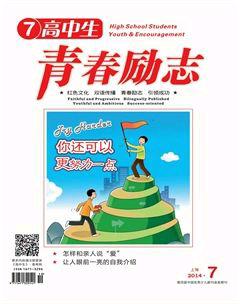《舌尖上的中国》不只说美味
佚名
There are many TV programs on Chinese cuisine, but few are like A Bite of China. The seven-part high-definition documentary offers insights into the geographical, historical and cultural dimensions of what Chinese eat.
“How to create dishes is only one aspect of food culture,” the director Chen Xiaoqing says. “The program tries to bring something new by presenting more cultural elements related to dishes, such as eating habits and the ethics of eating.”
Each episode lasts 50 minutes. Themes range from ingredients to preserved food.
One episode, for example, centers on the staple foods. It recounts Chinas history of paddy cultivation to explain why rice is the mainstay of the southern Chinese diet, while wheat flour is the foundation of the northern diet. But it goes further to break down every staple food into its various styles, such as the Xinjiang Uygur Autonomous Regions naan (flat bread) and Jiangsu Provinces Huangqiao sesame cakes, both of which fall under the wheat category.
The bonus is, the show is not only about dishes. “As a saying goes, ‘you are what you eat,” Chen says. “Behind the documentarys eye-popping and mouth-watering images are personal stories that reflect peoples living situations and attitudes.”
An episode about pickles, for instance, revolves around a white-collar woman in Beijing, who returns to her hometown in Jilin Province and makes pickles for the first time for her lonely mother. Another episode captures joyful moments of sons and daughters making New Year cakes (rice pudding) after they return home from various metropolises to celebrate with their parents, who have been staying in their hometown in Zhejiang Province.
A Bite of China captures social transformations while presenting food cultures, such as showing the dispersion of extended families that leave the elderly in their hometowns while other members work outside—cases in which food serves as reminders of happy times and centerpieces of reunions.
于中国美食的电视节目数不胜数,但很少有像《舌尖上的中国》这样的节目。这部七集的高清纪录片,从地域、历史以及文化这几个方面深入探讨了中国人的饮食。
“如何做菜只是我们饮食文化中的一方面。”导演陈晓卿说,“我们的节目试图呈现出更多有关菜肴的文化元素,如饮食习惯和饮食道德。”
该片每集时长50分钟,主题涵盖了从食材到腌制品等各个方面。
举例来说,有一集就主要讲述了主食。这一集通过追溯水稻种植的历史,解释了为何南方人的主食是米饭,而北方人的则是面食。所有的主食又被进一步细分为不同类别,比如新疆的馕和江苏的黄桥烧饼都被归入面食类。
这部纪录片带给我们的额外惊喜是,它并不仅仅展现美食。“俗话说,‘人如其食。”陈晓卿说,“纪录片里那些生动鲜活、令人垂涎的影像背后,是反映了人们生活环境和生活态度的亲身经历。”
例如,在讲述腌制食品的一集中,故事围绕一位北京白领女性展开。女孩回到吉林老家,第一次为孤单的母亲腌制泡菜。另一集则记录了子女们纷纷从各大城市返回浙江老家,同父母一起过年、制作年糕的美好时刻。
《舌尖上的中国》在展现美食文化的同时,也捕捉到了社会的变革,例如大家庭中成员分散在各处,大家都在外工作,留下空巢老人在家乡生活。这种情况下,美食可以提醒人们去追忆美好时光,也成为家庭团聚时的餐桌佳品。
endprint

